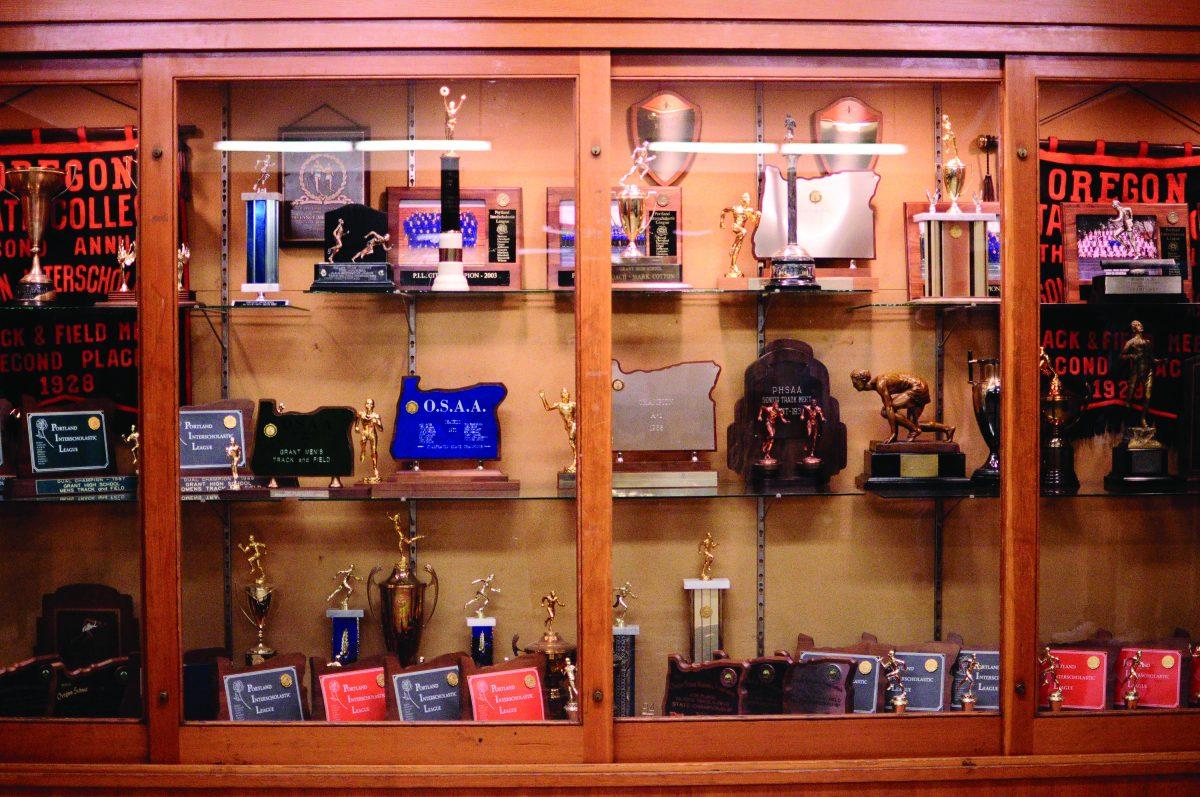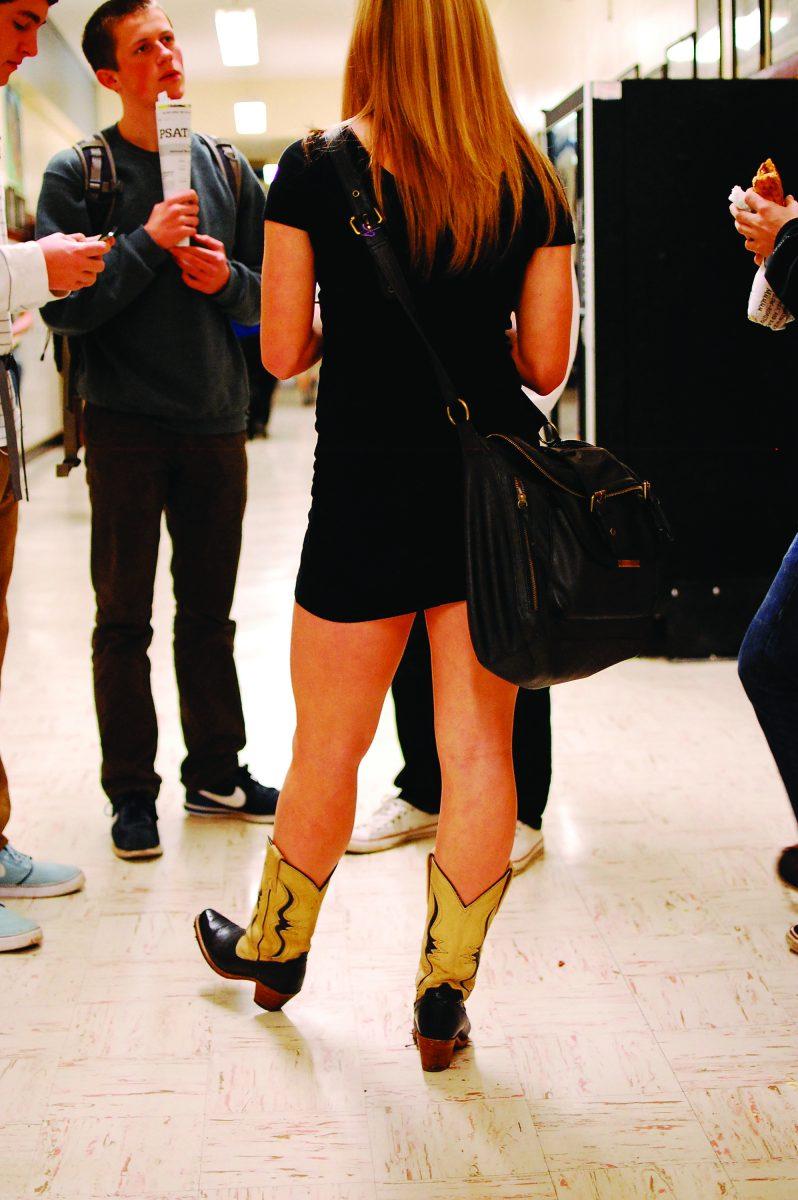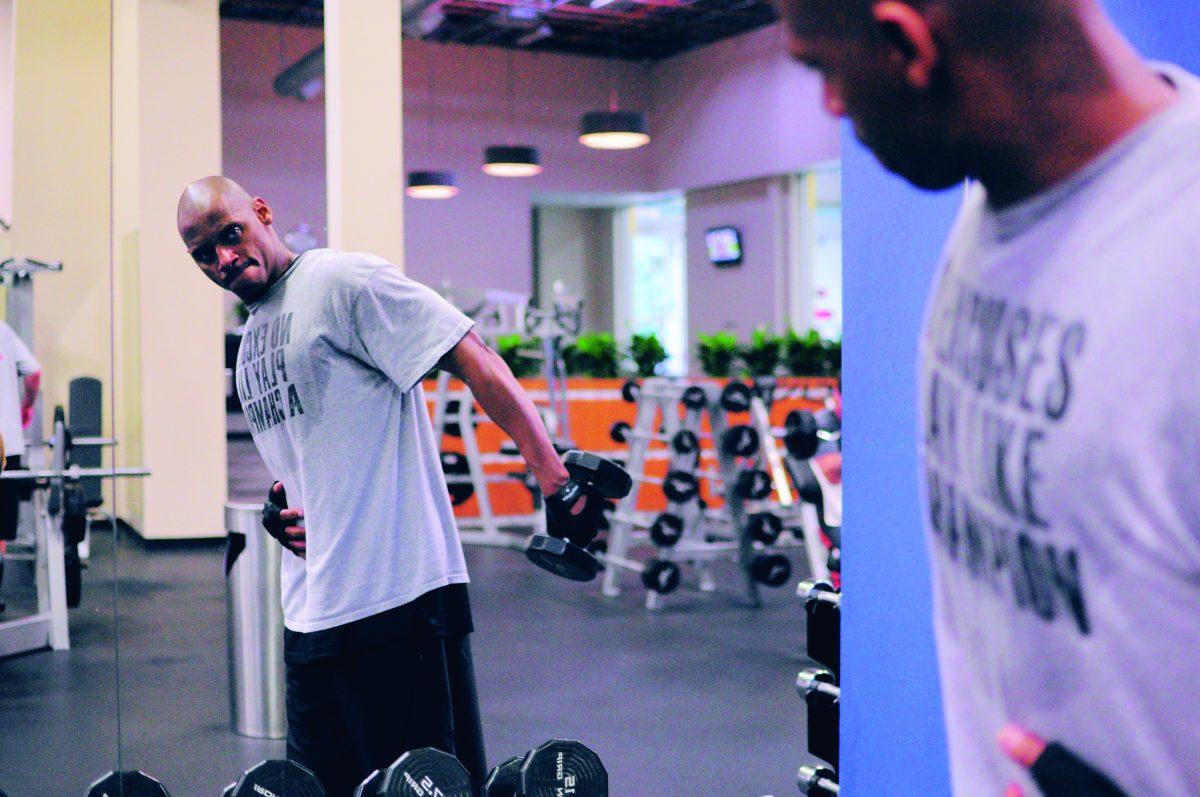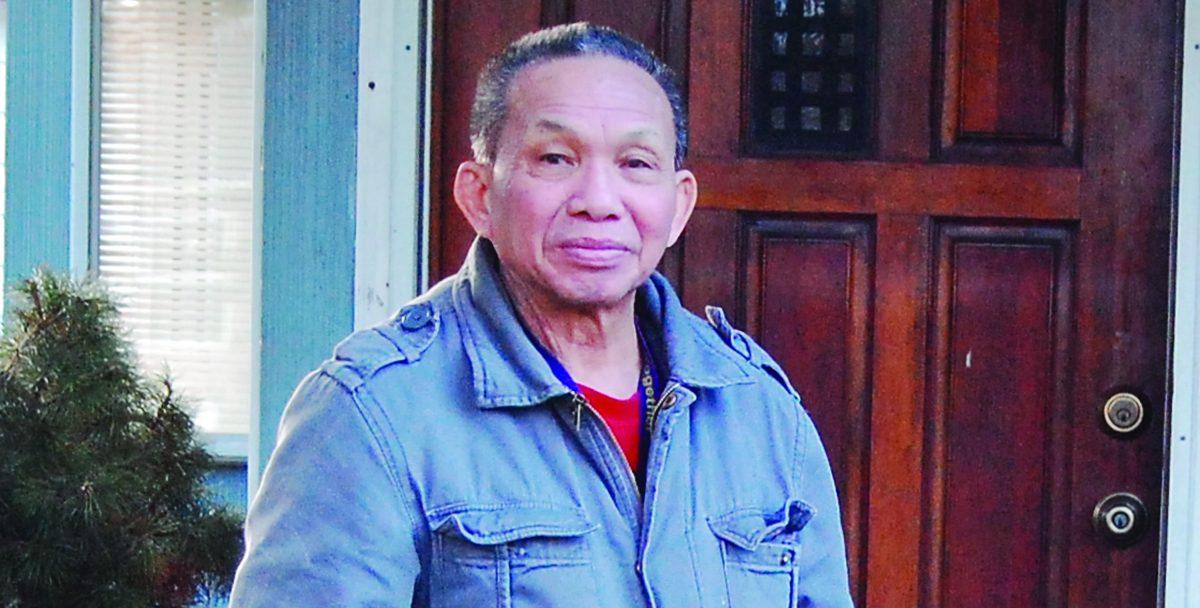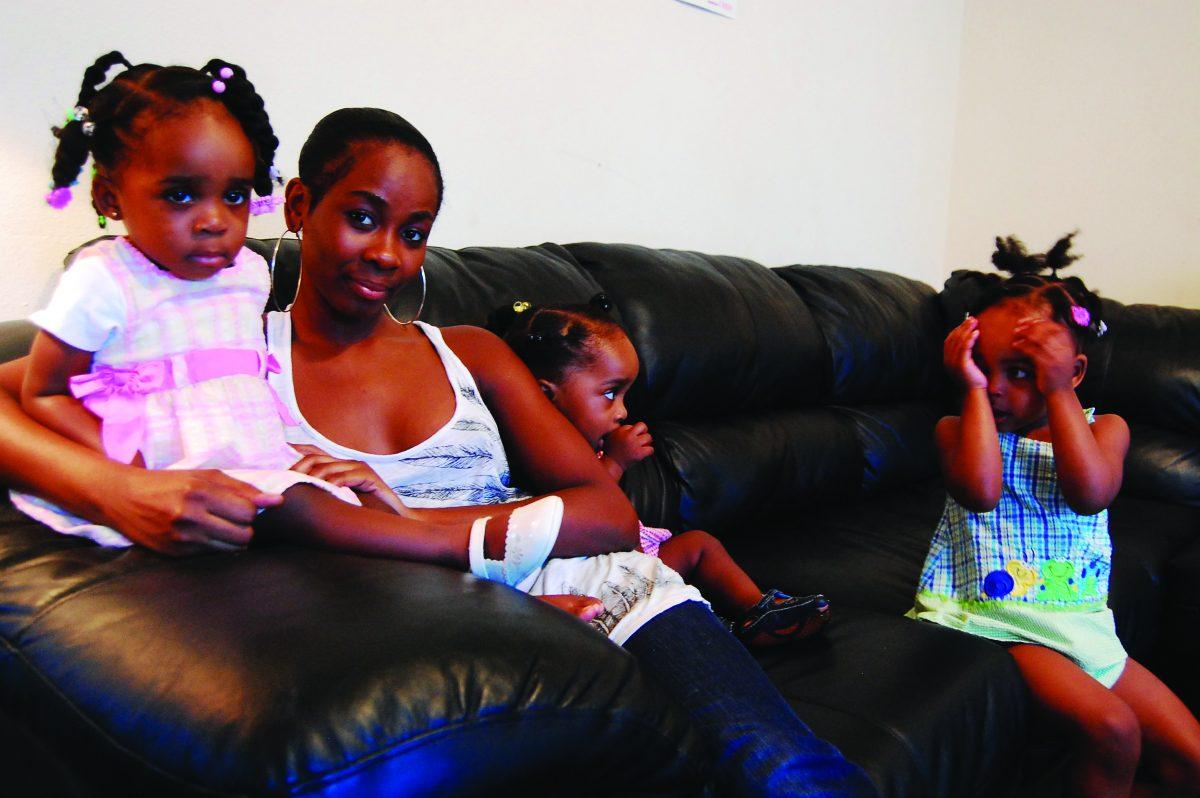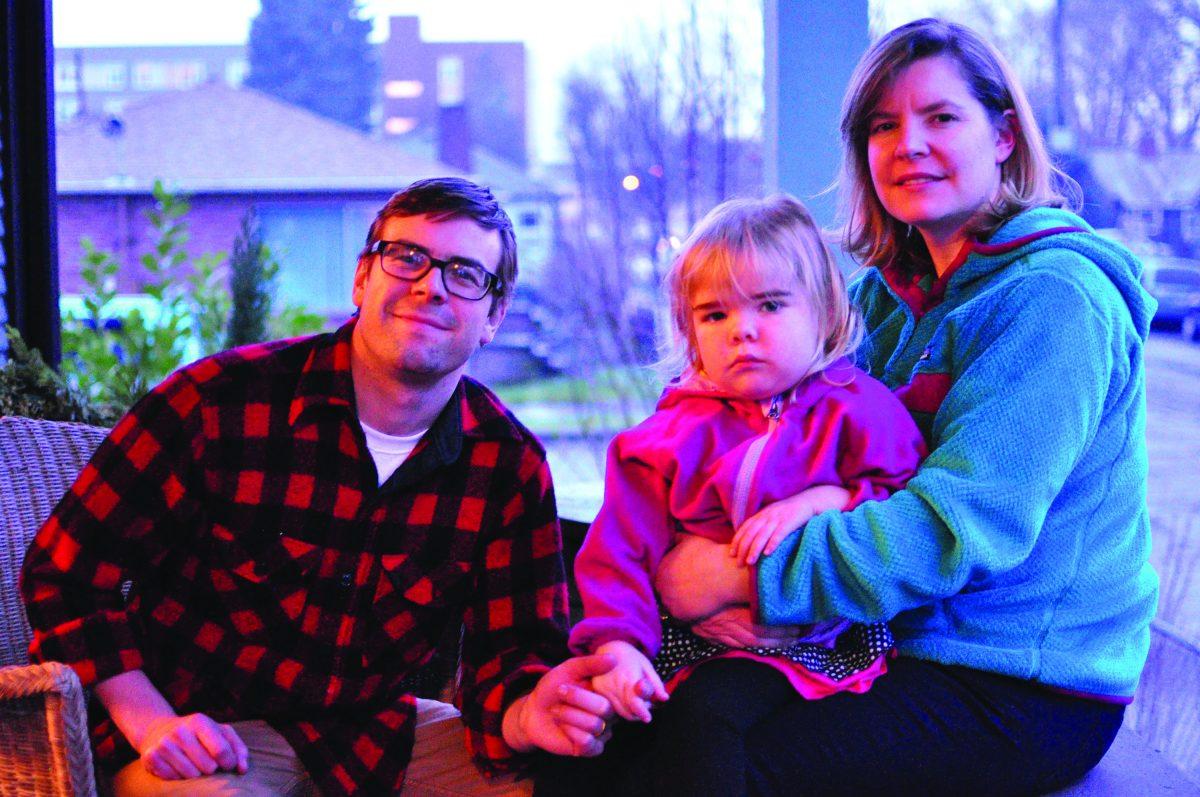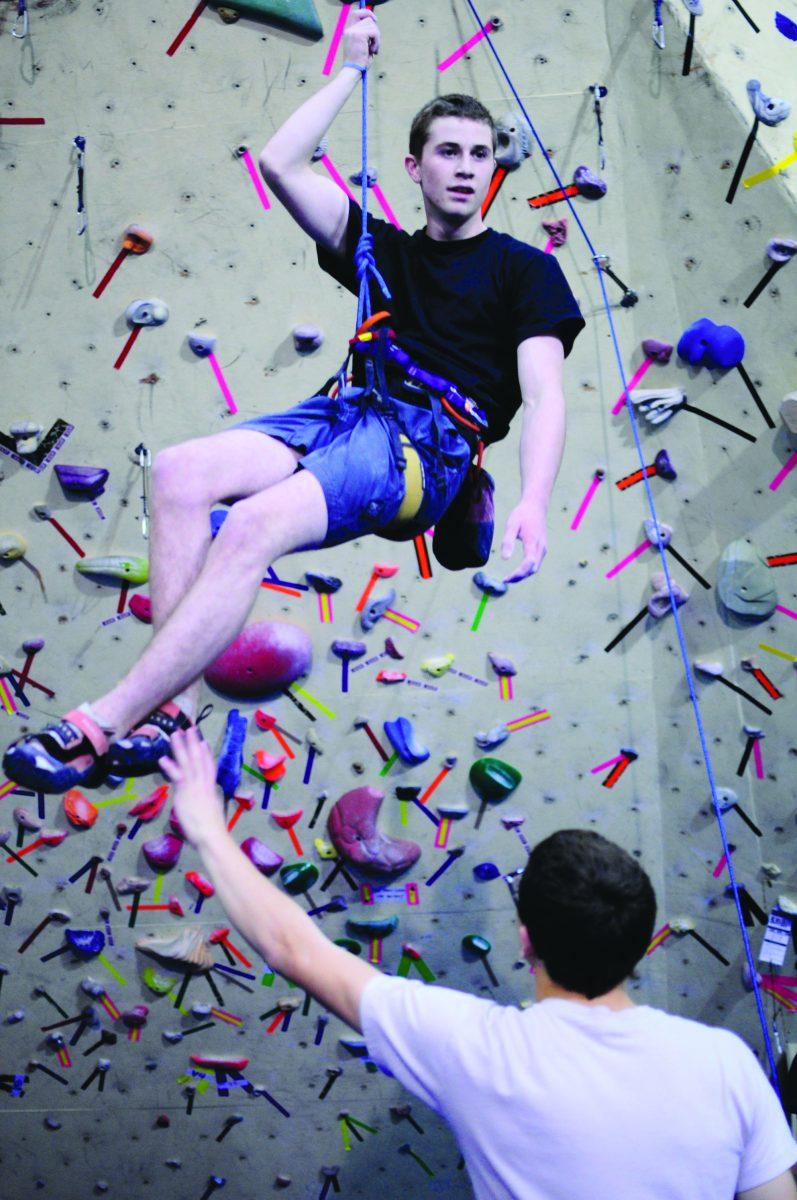It’s 1942, and Portland’s legendary swim coach Jack Cody calls out directions to his top flight swimmers, including Grant High School student and national champion Nancy Boland (Merki).
“Not all this chit-chatter’ round here,” Cody shouts. “Get in and do your laps.”
Splash.
Fast-forward to 1949 as Grant junior Virginia Enos (May) dives into the silky waters of Buckman Elementary’s swimming pool in one of the last practices before helping the Grant girls swim team win the state championship of 1949.
Now, 62 years later, Enos and Boland’s medals have been long misplaced, their bobbed hair out of fashion, and the glory of touching the wall first has settled into the drawers of past memory. But like them, the accomplishments, dedication and spirit of thousands of past Grant athletes live on around us — sometimes in the form of a trophy or plaque — but most noticeably, a picture.
They’re unavoidable. Walking the halls of Grant, it’s hard not to notice the dozens of sports pictures gracing the walls. We make fun of the 1940s basketball short-shorts, laugh at the ‘70s hairstyles or simply deem their presence a decorative border to our lockers. What we don’t consider are the many stories those pictures tell. They are silent memorials, preserving the story of Grant through the ages.
The pictures tell a story of old and new. As you move along the years, the boys’ shorts move farther down the thighs and teams become more racially diverse.
Look at the photographs from 1941 to 1945, taken during World War II. Many of the athletes pictured were among the 101 young Grant men who would later fight and die in battle during the war. It’s easy to wonder what they were thinking about as they posed with their teammates. The games of those years quite possibly might’ve been the last some of them ever played.
Grant High School has a rich sports history that has continued and changed throughout the years. John Kellar, a 1952 Grant graduate and part of the selection committee for the Grant High School Athletic Hall of Fame says, “Grants sports history goes way back. We have so many athletes that have accomplished so many things, and a lot of state championships.”
Keller notes that the athletes of today are bigger, stronger and faster than ever before. But they can learn a thing or two from past Grant athletes: respect the game and your teammates. “Sports is not an ‘I’ world,” Keller says. “It’s a ‘we’ world.”
Every year, a selection committee takes a look back at the school’s sports heroes — many smiling down upon us from the pictures — and inducts new members into the Hall of Fame.
Last fall on a chilly October evening, Grant added 19 athletes and two coaches to its honored ranks. That night, the hall recognized former student-athletes for their outstanding efforts. They sang the fight song, shared stories and revisited long-forgotten triumphs.

More than 100 members currently stand in the Grant Hall of Fame with accomplishments ranging from state titles, national records, participation on prestigious teams, and Olympic dreams. But few of these athletes can call themselves what Nancy Boland (Merki) of the Class of 1943 truly is — a pioneer.
Born in 1926, Boland had infantile paralysis as a child. It was the result of polio and doctors speculated she wouldn’t be able to walk.
“But that was not the truth,” the now 85-year-old Boland says assuredly.
With a supportive family and sheer determination, Boland strived to overcome her illness. Her father massaged her legs every day and she was encouraged to start swimming at her local YMCA as a form of therapy. “All those things made a lot of difference,” Boland recalls. “I was never a cripple.”
Not only did Boland get better, she discovered she had a talent for swimming.
During Boland’s time at Grant, there was no swim team for either girls or boys. So she decided to try her luck on the Multnomah Athletic Club swim team, coached by the prestigious Jack Cody, who by the end of his career had produced 15 Olympic swimmers. You could say he had an eye for potential.
“When I tried out for the team, Jack Cody took me right away,” Boland says proudly.
She soon became nationally famous — along with some of her teammates — as one of the “Cody Kids.” At 13, Boland set American records in the 200-, 400- and 800-yard freestyle events, and she was named the best athlete in the state of Oregon. By the time she was 16, she held five national Amateur Athletic Union records. The Cody Kids together won three national championships, while Boland set 19 individual records. They even made it into the pages of Life Magazine.
Boland achieved all her success while still a student at Grant, then the number one high school in the city. “I loved that high school,” Boland remembers, “and I had to walk 24 blocks to get there!”
Competitive by nature, Boland is quick to reveal her motivation to compete: “I liked to win.”

Swimming with some of the most talented girls in the nation, she and her teammates pushed each other to do their best. “You’re either competitive or you’re not,” she says. “And if you are, you don’t want anyone to beat you. Any athlete that’s good wants to be number one.”
One of Boland’s most memorable moments at Grant didn’t happen in the water, but at the White House. She was invited by first lady Eleanor Roosevelt to come to Washington D.C., for the “Women’s Week for Infantile Paralysis.” Polio was the disease that crippled her husband, President Franklin D. Roosevelt.
Over the course of her visit, Boland and an athlete who skated got to meet the president. “What do you say to the President of the United States,” Boland remembers thinking nervously. But her worry didn’t last, as President Roosevelt took control of the conversation. “Alright now,” she remembers him saying as they walked into his office. “Which one of you is the swimmer and which one of you is the skater?”
“He was a handsome, absolutely gorgeous-looking man,” recalls Boland. He even offered to show her the pool he swam in every day. “It was a very thrilling time,” she says now.
A swimming prodigy, Boland traveled all over the country for competition. “I was getting to do things a lot of kids my age were not able to do,” she says.
Boland was inspired to leave her mark like other women swimmers, such as her idol Eleanor Holm who was a world record holder in the backstroke. “Nobody could beat her,” Boland says with admiration. “Not only that, she was gorgeous.”
Today, Boland no longer swims. After graduating, she attended Willamette University, married and had three kids. She currently lives in North Carolina. She misses being in the water, but concludes matter-of-factly: “You get spoiled when you’re on a swimming team. You get a lane.”
She still gets out for exercise, walking three to five miles a day, and encourages women athletes to stay active for life. “I’m 85 years old and I still move around well,” she says. “I don’t think that would have happened if I hadn’t been an athlete.”
In 1947, four years after Boland graduated, competitive swimming was created for Portland Public Schools. Boland’s swimming legacy clearly helped get things started.
Virginia Enos (May), Class of 1950, was one of Grant’s next amazing swimmers. She began swimming competitively as a freshman after reading an advertisement in the school newspaper that was recruiting for the swim team.
The team practiced three times a week at Buckman and Enos was the state champion in three events while swimming for Grant. In 1949, she won the 100-yard breaststroke, setting a state record that stood for seven years, and helped Grant win the state championship.
“We had a lot of school spirit,” says Enos. Who recalls going to football games in the bowl and at then-Multnomah Stadium (now Jeld-Wen Field).
After graduating from Grant, Enos went to the University of Washington, which at the time did not have competitive sports for women. In fact, few universities did, as this was long before the passage of the groundbreaking Title IX law that created a level of gender equity in education programs that receive federal funding.
Now age 79 and living in Hawaii, Enos has continued swimming. Ten years ago, she placed second in the 100-yard backstroke and fourth in the 200-yard backstroke at a U.S. masters swimming competition.

“Swimming really added to my enjoyment of school,” says Enos, who is grateful to Boland for opening the door for her at Grant. “She was the one that really started women’s swimming in Portland.”
At the Hall of Fame gathering in October, Boland and Enos were among the athletes honored. Principal Vivian Orlen told the audience the awards connected the present to our glorious past. “We are all part of a very important tradition, a tradition of blue and grey.”
During the ceremony, the athletes or family members were called to the stage to accept their awards. Everyone had someone come forward to honor them. Everyone except Chuck Oettinger from the Class of 1949. When his name was called, the auditorium fell silent. No one stepped up to receive his award. Not Oettinger, not a family member, not a friend. No one.
Oettinger was a promising football star who went on to play for Oregon State University. He was, according to the Oregonian, “one of the best line-backing prospects to hit the campus in several years.” When was the last time his name was said aloud in the halls of Grant? Possibly after the rising star’s last football game.
He wore number 46, a jersey number worn by many others over the years. Anyone wearing it today is probably unaware that Oettinger—the handsome teen with the contagiously goofy smile—wore it with pride until his untimely death more than 60 years ago. He was just a sophomore in college when he died.
They’re gone now. But in the sports photographs, Oettinger’s tackles, and Boland and Enos’s graceful strokes live on in the halls.
Next time you’re at your locker, all you have to do is look up.



























